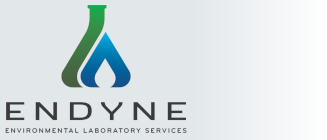Proper management of hazardous waste is critical to protecting the environment. Hazardous waste can be generated during the remediation of contaminated sites, such as brownfields. However, far more waste is generated in the day-to-day activity of people and business. Hazardous waste is regulated for business by both the types of waste and the volume of waste generated. There are three major classifications of hazardous waste generators.
Conditionally Exempt Small Quantity Generator: generates less than 100 Kilograms of hazardous waste monthly and less than 1 Kilogram of acutely hazardous waste monthly.
Small Quantity Generator: generates more than 100 Kilograms but less than 1000 Kilograms of hazardous waste a month.
Large Quantity Generator: generates more than 1000 Kilograms of hazardous waste a month or more than 1 Kilogram acutely hazardous waste.
The links below are some useful resources provided by the EPA website:
Hazardous Waste
Hazardous Waste Generators
Almost all businesses create some amount of hazardous waste, even if it is as simple as fluorescent bulbs containing mercury. Most of these waste “streams” are easily categorized and do not require analytical testing. Conversely, just because a hazardous material is going into a process, doesn’t mean it is coming out as a waste. Significant cost savings can be realized by ensuring your wastes are characterized correctly. Endyne can analyze your waste for hazardous constitituents and empirically determine whether it should or should not be characterized as hazardous waste.
Please contact us if you would like to discuss in more detail your hazardous waste operations.
There are 4 characteristics to hazardous waste determination of unknowns:
Ignitability
If the material is solid, like paper, wood, etc, then it is analyzed for Ignitability. Solid samples have results that are either positive or negative. If the material is a free-flowing liquid, such as water or oil, the Ignitabilty is determined by Flashpoint. The Flashpoint result is either a temperature at which the sample flashed (positive) or a “>158 C” (negative). Many waste haulers request a determination up to 220 Celsius.
Corrosivity
In this case Corrosivity is really pH, to determine if the material will eat through metal, etc. A waste sample, even if it is aqueous, is treated as a solid. If the material is a solvent, which may harm the probe, it will be analyzed using pH paper method.
Reactivity
According to the EPA Website, Reactivity is a measure of how unstable the substance is under normal conditions. Reactive wastes can cause explosions, toxic fumes, etc when heated, compressed or mixed with other substances. Generally, the reactive release of Cyanide or Sulfide is the only determination of Reactivity. We do not perform this assay at our facility, but we work with a subcontracted lab to perform certified analyses.
Toxicity
Toxicity consists of testing for 44 compounds deemed by the EPA to be toxic. Toxicity of a substance is divided into 5 groups of analytes: Metals (The RCRA 8 Group), Volatile Organics, Pesticides, Herbicides, and Semi-Volatile Organics.
Industrial
- Waste Oil Analysis for combustion – Requires an air permit and oil testing
Assays and action limits as of October 2006.- Arsenic: < 5ppm, Cadmium: < 2ppm, Chromium: < 10ppm, Lead: < 100ppm
- Flashpoint: > 100 °F
- Total Halogens: < 1000ppm
- PCBs: < 2ppm (each)
- BTU: > 8000 BTU/lb
- Hazardous Waste Disposal
Speak directly with your state hazardous waste division to find out testing requirements. Typically TCLP metals, solvent screen, Flashpoint are required parameters, which we analyze at our Williston, VT facility. - Monitoring oil that is currently in use in heavy equipment for wear and breakdown components, water, viscosity, etc. These analyses typically do not require the high degree of quality control Endyne requires as part of its environmental certification programs. We recommend searching the web for “Oil Analysis Services”
Many hazardous wastes are defined by the industrial process that creates them. A list of them can be found in Vermont’s Hazardous Waste Management Regulations (Adopted from EPA). These wastes are typically identified as “F-“ or “K-“, etc. “Wastes”.
If the waste stream does not fit into one of these predefined waste streams or the origin of the waste is unknown, then the samples need to be screened for hazardous waste characteristics.



